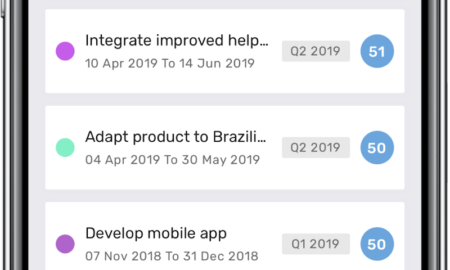— September 10, 2019
There are 1.8 million apps in the world – and this is the number for the iOS software only! Today, we enjoy the abundance of mobile tools more than ever before. But with so many options, how do we choose the app right for us?
When it comes to collaboration software, our choice is especially important. We are picking apps to help us reach goals and meet deadlines. Our time and money are at stake. Sounds serious, right?
Designing a Slack alternative, the team at Chanty explored numerous apps and took a bold step to make our own list of top mobile collaboration software. The products mentioned here are somewhat unique from the UX, UI, or mobile design point of view. Listing them, we also illustrate successful trends in product management. What features might be especially handy for state-of-the-art software? How do these apps cope with the challenges of competition, fragmentation, and marketing fit? We included more and less popular apps to the list. Have a read.
G Suite
I have no kickbacks from Google. (I wish I had!) But as our team uses G Suite on a daily basis and the tool can be found in nearly all lists of team collaboration software, I placed it as number one.
G Suite is the prime example of a long-standing global trend: the tools for working jointly gradually become the collaboration systems, solving multiple tasks. With Gmail, Calendar, Hangouts Chat and other features, G Suite is like an all-in-one package for teams, not to mention it can be linked to other tools like Zoom, Asana, or Jira.
Talking about the mobile experience, G Suite issued some crucial updates for iOS and Android in 2019. The expanded search bar and revised actions menu appear to be really beneficial for the UX. Google’s latest material design principles also win my respect, creating a cohesive, branded experience that many tools seem to lack.
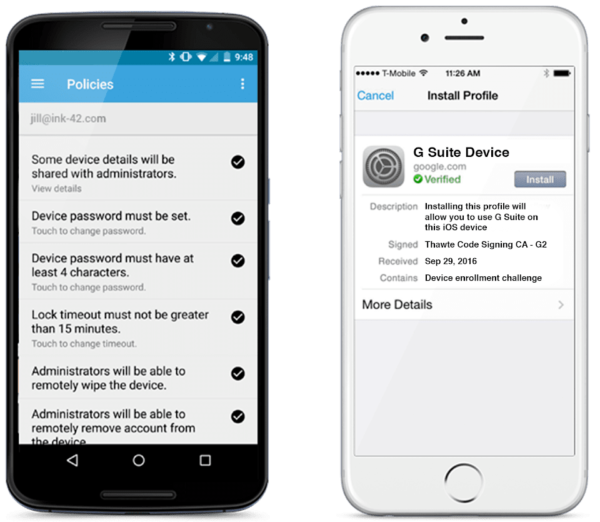
Chanty
The mantra ‘less is more’ has dominated in product management and design lately. Basically, it implies that the best mobile experiences are the ones that let users cut right to the chase. Chanty, a brand-new Slack alternative, serves as a good example of such an endeavor.
The tool delivers traditional chat functionality within the minimalistic design and easy-to-navigate UI. Files, links, tasks, and conversations are organized in one place called Teambook, which turns Chanty into a collaboration hub for small and medium-sized teams.
It’s also noteworthy how the app handles the competition challenge. With Slack being ubiquitous, Chanty pushes into the market with competitive advantages like the unlimited message history, video calls on mobile devices and a built-in task manager.
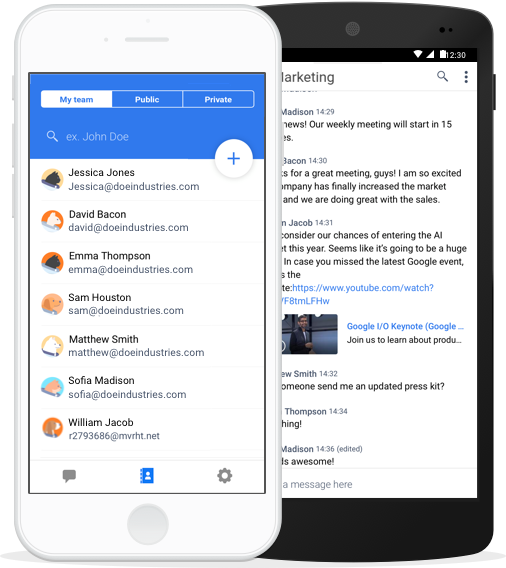
Trello
Across a plethora of PM tools, Asana, Basecamp, and Trello are most often mentioned. With over 1 million teams actively using the service, Trello might be the most popular among them. But the actual reasons I list the tool here are two-fold.
First, it’s a highly visual app, which is an asset for our culture embracing images and graphics of any kind. Trello’s Kanban-based approach creates a set of visual experiences, which might put the tool ahead of the game.
Second, Trello features a very important trend in collaboration tools which is automation. After acquiring Butler, an integration allowing to do repetitive tasks – Trello seems to step up its game, gradually moving towards big enterprises.
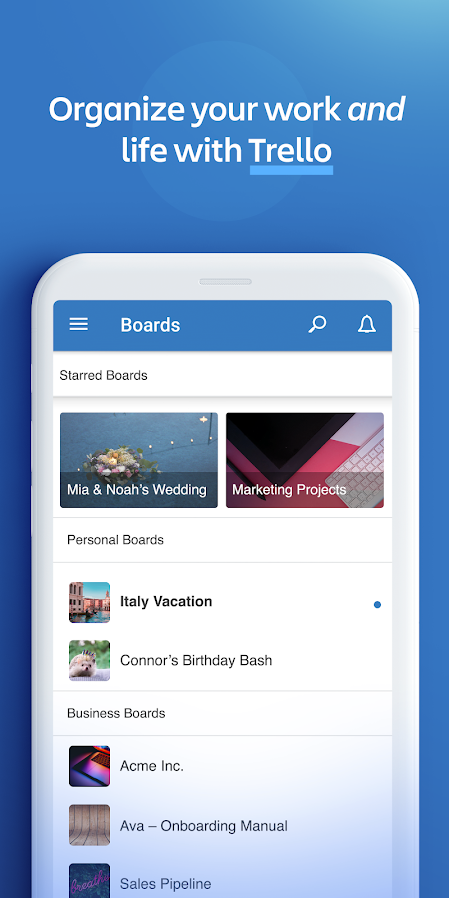
Pomodone
Time management tools have always been in demand. You might have noticed, however, that many of them gained another very important role lately. They are not only about controlling our hours but also about preventing burnout, recently recognized as a chronic condition. I list Pomodone here as an example of an app that handles the challenge of marketing fit by addressing burnout and some other productivity issues.
The tool utilizes the well-known Pomodoro technique – it allows breaking the work sessions into manageable pieces. With many apps using this approach, Pomodone finds its niche by synchronizing with more than 30 apps – nearly all project management platforms. With features like web site blocking and interruption disruption shield, the app can also be used as a sole mobile product management tool for everyone on the go.
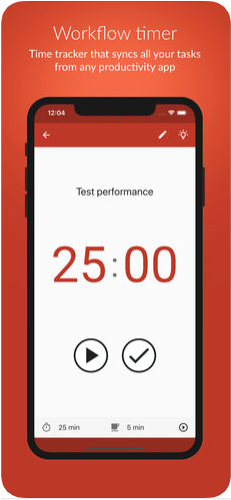
Evernote
Evernote is one of the apps that hardly need any introduction. I mention it to illustrate the steady product advancement and market penetration of a time-proven tool in 2019. Being a ten-year-old organizer app it’s been now pushing into collaboration software.
With new “spaces” tool for teams, Evernote users can share notes with coworkers, as well as edit text and images – all in real-time. Recently, the tool introduced Gmail integration while also planning to use Google’s machine tools. Soon enough, Evernote might scan notes to anticipate actions to be taken after, for example, within a PM tool.
Personally, I also find Evernote mobile user-friendly with legible font sizes, satisfactory color contrast, and correctly sized content.
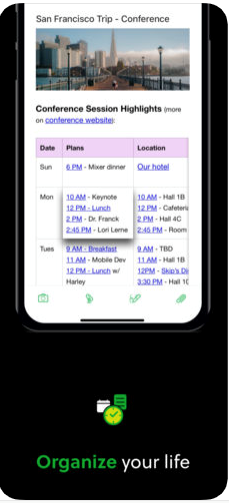
SmartTask
It’s not all about “collaboration hubs,” though. Sometimes, utilizing just a couple of main functions for a particular job role might be enough. SmartTask is an example of such a 2-in-1 initiative.
Basically, it’s a task management and CRM tool for project-oriented teams. Put shortly, one can customize the task with custom fields and CRM contacts. The activity feed is available in the mobile app while the “portfolio view” features all of the projects’ status in a single view.
Besides, the tool jumps on a very important and popular UX trend, which is personalization. SmartTask uses templates for different teams to better suit their needs.
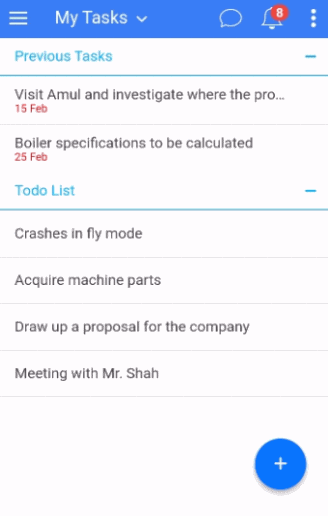
Dropbox
You may wonder why I included another file-sharing tool on the list, as G Suite was already mentioned. Apparently, some experts believe (and I happen to agree with them) that Google’s tool may work better for internal communication. For sharing files with someone outside the company, other platforms like Dropbox provide better flexibility.
Like most of the tools mentioned earlier, Dropbox has made some crucial steps toward an enterprise focus. In 2019, the tool says hello to digital signatures, workflow and document automation by acquiring HelloSign.
Recently, I noticed that Dropbox Business is the solid leader among collaboration tools on Capterra platform by the number of reviews, which seems like a tell-tale sign the app stays up to date and worthy of customers’ attention.
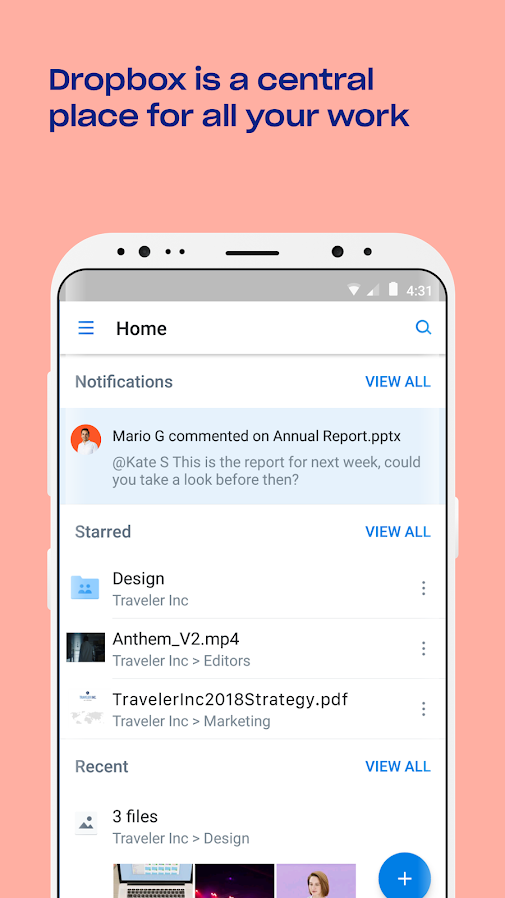
Airfocus
Data-driven decision making has been a thing for years. Although, not all the apps following this trend bring actual benefits. Either data is too big (or too small) or computing algorithms are too cumbersome. However, some prioritization apps, like Airfocus, utilize an easy-to-use scoring system.
How does it work? Let’s say you are considering what to do first – renew your blog or launch a Facebook ad campaign. Then you rate every item – sometimes in an unusual way – e.g. defining strategic fit by putting Latin letters “S,” M” or “L.” As a result, one gets a total score, allowing to build a road map of a project. Priorities can be visualized while the tool integrates with many project management apps.
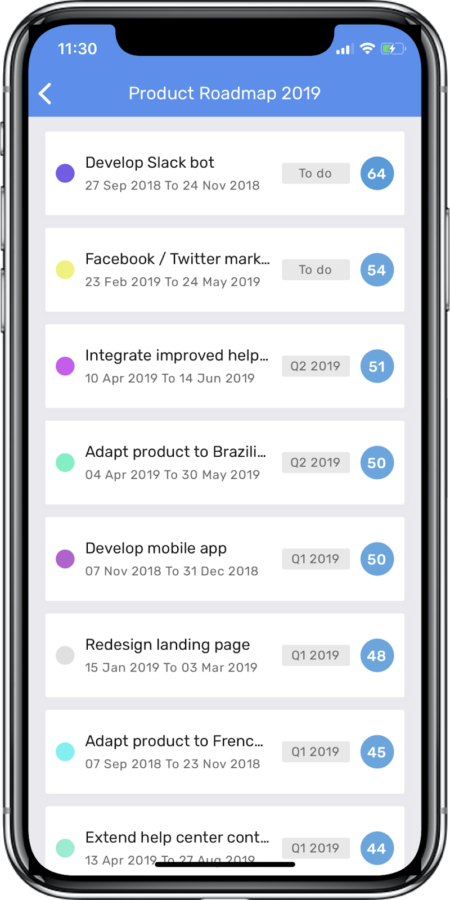
InVision
Yes, InVision is for designers. And if you asked me to prove it’s head and shoulders above its competitors, e.g. Adobe’s products, I would probably start wavering. But InVision, especially with its recent mobile updates, seems like a bright example of a solid eco-system for a specific work field – design in our case.
Basically, InVision is for creating rich interactive prototypes and gathering feedback. Its advanced features, however, are diverse including mobile mirroring. It works by scanning a QR code on a mobile device which lets users view design changes immediately. Needless to say, the app also features a visually pleasing UI with the flat and semi-flat design prevailing. Although, InVision for Android users is currently in beta.
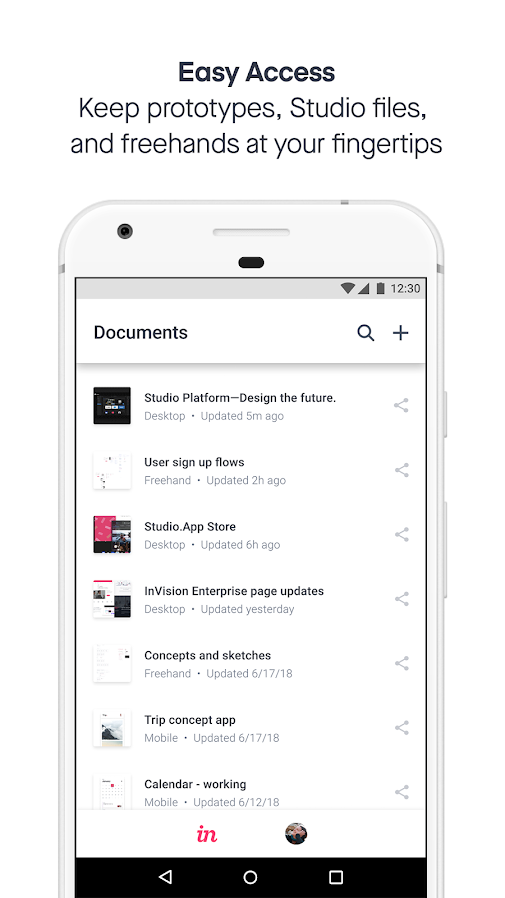
Wrapping up
We’ve looked at nine top mobile collaboration software apps for your team in the context of product management trends.
- G Suite is a collaboration system that wraps up multiple tools creating the cohesive workflow for teams with its updated look on mobiles.
- Chanty – a smart yet easy-to-use Slack alternative – is a prime example of the ‘less is more’ trend in collaboration tools for middle and small-sized teams.
- Trello is a popular visual tool that embraces automation tendency in product management apps with its Butler integration.
- Pomodone is a time management app that solves its challenge of the market fit by using Pomodoro technique and integrating with dozens of third-party PM tools.
- Evernote, a simple note-taking app back in the day, is now pushing into the collaboration software market, allowing users to share notes, edit text and images – all on the go.
- SmartTask is a solid example of a 2-in-1 tool for project and sales management with ‘portfolio view’ showing all of the projects’ status and embracing personalization trend.
- Dropbox is a file-sharing tool with digital signatures, workflow, and document automation features that could work great for a company’s outside communication.
- Airfocus is a prioritization tool embracing the trend of data-driven decisions with easy-to-use scoring algorithms and visualization solutions.
- InVision is an ecosystem for designers stepping up its game on mobiles with some studio features and mobile mirroring.
Of course, there are many more great apps. Feel free to share your take on the best mobile collaboration tools in the comments.
Business & Finance Articles on Business 2 Community
(144)
Report Post